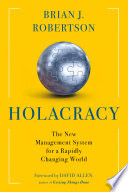

Holacracy introduces a system where authority is decentralized, shifting away from traditional hierarchical structures. In a holacratic organization, power is distributed across self-organizing teams or 'circles' rather than being concentrated in the hands of a few leaders. This decentralization empowers individuals at all levels to make decisions relevant to their roles, fostering a sense of ownership and accountability. By distributing authority, organizations can respond more swiftly to changes and challenges, as decisions can be made closer to the point of action. This leads to increased agility, innovation, and a more engaged workforce.
Continue readingIn traditional organizations, job titles often define a person's role, limiting their responsibilities and scope of work. Holacracy shifts this paradigm by focusing on roles rather than titles. Each individual can hold multiple roles that define their responsibilities and accountabilities, which can change based on the organization's needs. This flexibility allows individuals to contribute to various aspects of the organization, enhancing collaboration and reducing silos. Moreover, roles can be updated as the organization evolves, ensuring that everyone is aligned with the current objectives and priorities.
Continue readingHolacracy includes a formal governance process that allows teams to define and evolve their roles, policies, and structure. This process is distinct from the operational work and provides a structured way for teams to adapt to changing circumstances. Governance meetings are held regularly, where team members can propose changes to roles and accountabilities. This democratic approach to governance ensures that everyone has a voice and can contribute to the evolution of the organization's structure. It fosters transparency and encourages active participation, leading to a culture of continuous improvement.
Continue readingIn addition to governance meetings, Holacracy emphasizes the importance of tactical meetings for operational efficiency. These meetings are focused on the day-to-day work and allow teams to discuss current projects, address obstacles, and make quick decisions. Tactical meetings are time-boxed and structured to ensure that they remain productive and focused. This dual-meeting structure—governance for long-term evolution and tactical for immediate action—helps organizations maintain clarity and alignment while being responsive to both strategic and operational needs.
Continue readingHolacracy promotes a culture of transparency, where information is openly shared across the organization. This transparency is crucial for decentralized decision-making, as individuals need access to relevant information to make informed choices. Tools and systems are often implemented to facilitate the flow of information, ensuring that everyone is aware of the organization's goals, priorities, and ongoing projects. By breaking down information silos, Holacracy enhances collaboration and ensures that all team members are aligned and informed, leading to better decision-making and increased trust within the organization.
Continue readingOne of the core principles of Holacracy is the idea of continuous evolution. Organizations are encouraged to regularly assess and adapt their structures, roles, and processes based on feedback and changing circumstances. This adaptability is essential in today's fast-paced business environment, where organizations must remain agile to survive and thrive. Holacracy provides the framework for this evolution, allowing organizations to pivot quickly in response to new challenges or opportunities. By fostering a culture of experimentation and learning, organizations can innovate and improve continuously.
Continue readingImplementing Holacracy requires a significant cultural shift towards self-management. Employees must embrace the idea of taking ownership of their roles and decision-making processes. This shift can be challenging, especially in organizations accustomed to traditional top-down management styles. However, when embraced, self-management leads to a more engaged workforce, increased job satisfaction, and higher levels of creativity and innovation. Leaders play a crucial role in facilitating this cultural shift by providing support, training, and encouragement as employees adjust to their new roles in a holacratic system.
Continue reading